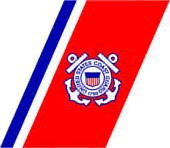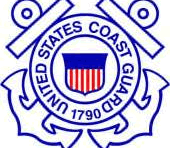Ralph J. Gervasio


Motor Machinist Mate Second Class(MoMM2) Ralph J. Gervasio
WWII Honorable Service 1941-1943
his story takes us…
In And Beyond Coastal Waters
As verbalized in his 89th year to his son, Ralph Jr.
Linthicum, Maryland 2010:
In 1940, I routed peacetime troop movements for the Atlantic Coastline Railroad. Due in part to my two years of college at Ryder in New Jersey, and I suppose in part to my efficiency at my job, I was offered an officer’s commission by both the Army and the Navy. I turned them both down. I had met a Baltimore girl named Peggy who taught dancing In Washington and I saw no reason to change the good thing I had going with her as well as my job. I was also an avid Washington Redskins football fan and enjoyed going to the games at Griffith Stadium. That enjoyment ended abruptly when I attended the Redskins vs. the New York Giants game on Sunday, December 7, 1941. Anyone who sat in those stadium seats and is still alive today will remember the event just as I do. In the midst of a raucous crowd of fans, an announcement came over the p.a. system that the Japanese had attacked Pearl Harbor. There was total, absolute silence in the stadium. It was chilling. Like so many others my age, I knew I had to volunteer for some kind of military service, but this would be wartime service.
On Monday, December 8, 1941, I tried to enter the Army Air Corps to become a pilot. After passing all the written exams, I failed the test for color perception and was rejected for a commission. I drove home to Trenton, New Jersey to get advice from family members, and then decided to test for pilot’s commission with the Marine Corps. Again I passed written exams but failed the eye exams for color perception. I did not understand why color was so important. A Navy recruiter wanted me to join as an enlisted man, but I decided instead to join the Coast Guard. That way, I thought, I would be hugging the coast as well as hugging my girlfriend. How Naive I was at 20 years old. Initially, though, my plan worked. Boot camp was in Norfolk, Virginia, and during that time I had leave every weekend. I had pointed out Peggy to a friend of mine and simply told him, “You see that girl over there…I’m going to marry her.†I also had bragging rights of being the battalion leader.
After boot camp I was assigned duties right there in Norfolk. While it was great to be near Washington and satisfying to be in uniform, I did not really enjoy the duties. My first assignment was night watch tower duty logging ships’ movements. I had to have an accurate record of all movements to and from Norfolk after dark. Another Norfolk duty was in an office typing forms and personnel work. I decided to go to my commanding officer and request sea duty. The snappy response I heard was “You got it!†The Captain asked if I wanted to go to a school and stateside and of course I said yes. My next duty station would be in Groton, Connecticut to learn how to become a Motor Machinist Mate. Seemed like a plumb assignment at the time.
This phase of my service was in 1942, and after passing Motor Machinist school and rapidly advancing to enlisted Second Class, I was sent back to Norfolk–to type paychecks. Again I went to the C.O. and requested sea duty and got the same “you got it†response. This time they sent me to Little Creek, Virginia to learn how to operate the (at that time experimental) Higgins boat. This was a small, flat-bellied boat with a drawbridge landing ramp. With a surge, fifty cramped and seasick men would squeeze past the ramp’s jaws and slog onto some beach. Now I realized that my orders for sea duty were no bluff, and I had bitten off more than I expected to chew. Off I went on an LST (landing ship tank) to support amphibious operations in North Africa. The LST I was on carried munitions, vehicles, cargo, medical supplies and about 150 landing troops. I think there were three or four Higgins boats aboard and one would be mine. We steamed aside and with other LSTs bound for the same place. The trip to North Africa was a tense a pensive time for all of us aboard that rocking and rolling ship, as we knew at any time we could be hit with Nazi torpedoes.
My job was to operate a Higgins boat with one other crew member. After a Higgins would be lowered into the water, men would then climb down the LST nets on either port or starboard side of the deck. It was a scary, apprehensive and terrifying time for all aboard that LST. The ship I was on was loaded with munitions, small vehicles food, medical supplies, and up to two-hundred men. Only when we were aboard and underway did we learn that our destination was Oran, Casablanca. This was towards the end of November in 1942.
Our troop flotilla and escorts approached the shores of North Africa late into the night. In the pitch dark, I saw a tanker explode and light up the sky as if it were mid-day. I do not know if that tanker had been struck by a German sub’s torpedo or by the Vichy French and their guns known to be in the area. Those men stuck on that tanker never had a chance. When that tanker was hit, the Navy answered with its guns aimed, I suppose, somewhere ashore or perhaps at another vessel. It was hard to tell what was happening in the confusion and darkness. At daybreak the order was given to rush our strike force in and launch all landing crafts. Although things seemed relatively quiet, we still had to expect resistance and we sure got it. As our Higgins boats were being lowered over the side with me in one; I witnessed an LCI (landing craft infantry) full of men taking a direct hit from a Vichy gun. That ship had been packed on decks and below with at least 200 men. Then another was hit, then another…then my next memory is of my arms and legs thrashing in the water…the smoke…the oil slicks…pungent smells…and the screams of men. Then nothing.
I awoke in a hospital bed–Norfolk Naval Hospital I would learn. I did not know what had happened to me in Africa, but at the least, I had been concussed and unconscious, and had complications with my stomach. In a twist of fate, that incident in North Africa turned out to be a blessing in disguise. Without the immediate attention I received in the Norfolk hospital, I would not know until later that I suffered from bleeding ulcers. My stomach had nagged at me for some time while in the Coast Guard and at least now, I knew why. During treatment in the hospital, Peggy visited me at bedside and gave me a beautiful Coast Guard ring, which I have today. After all, I was her one and only “Coasty†(although at least one officer had sought after her) and I have been her husband Coasty for 66 years.
After I was released from the Norfolk hospital, I got orders for Moorhead City, North Carolina. Although in 1943 the Germans were beginning to lose the war in the Atlantic, they had still slipped into various coastal waters, with North Carolina being a hotspot for German subs. I do not think Americans at home knew how vigorously the Nazis had infested our waters with their long-range subs. One day at Moorhead, I witnessed the Coast Guard Cutter Icarus raising a German sub that had been detected barely out of our waters by dumping depth charges until they had enough. The sub’s crew surrendered and I could hear the crewmembers repeating the word “wasserbombs†as they were brought, dazed and shaken, ashore with an armed shore patrol unit.
Having experienced how terrible war in a foreign place could be, I did not mind duty in Moorhead City or anywhere else stateside. In fact, I enjoyed being the helmsman aboard the sailboat sub-chaser Comanche as it patrolled North Carolina shores. The only time fear crept back in was when we aboard ship would see a school of dolphins. They looked too much like torpedoes at night.
Later that year of 1943, I became sick again with stomach problems. When they abated for a spell, the Coast Guard decided to give me a medical (honorable) discharge with a 60% disability. Memories of my time in the Coast Guard and at war are still punctuated with crisp, sharp images–good and bad–and remind me of how our generation distinguished itself in ways still realized today.
—————————————————————————————–
Note: In what seems more than a string of coincidences, Ralph Gervasio entered World War II in 1941, while his son, Ralph Jr. entered the Vietnam War in 1971–30 years later. Ralph Sr. exited his war in 1943, while son Ralph exited his in 1973–30 years later. They are 30 years apart in age. One Ralph chose the Coast Guard over the Navy; the other Ralph chose the Navy over the Coast Guard. One saw action off the coast of North Africa; the other off the coast of North Vietnam.










